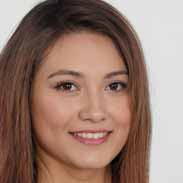1.2.14. (cf) Resulting From One Of – Flashcards
Unlock all answers in this set
Unlock answersquestion
What are mutations?
answer
Mutations are a change in the DNA code.
question
When do mutations arise?
answer
DNA replication- they can occur naturally of be induced
e.g. radiation.
e.g. radiation.
question
How do mutations lead to non-functional proteins?
answer
Mutations may change the sequence of amino acids in primary proteins.
This creates a different sequence of R groups and
And therefore different bonds between the R groups
The protein folds up differently.
The protein will no longer be able to carry out its function e.g. the active site will no longer complement the substrate.
This creates a different sequence of R groups and
And therefore different bonds between the R groups
The protein folds up differently.
The protein will no longer be able to carry out its function e.g. the active site will no longer complement the substrate.
question
How do mutations lead to non-functional proteins?
answer
Mutations may change the sequence of amino acids in primary proteins.
This creates a different sequence of R groups and
And therefore different bonds between the R groups
The protein folds up differently.
The protein will no longer be able to carry out its function e.g. the active site will no longer complement the substrate.
This creates a different sequence of R groups and
And therefore different bonds between the R groups
The protein folds up differently.
The protein will no longer be able to carry out its function e.g. the active site will no longer complement the substrate.
question
Name the four types of mutation and describe each.
answer
Substitution: is a type of mutation where one base pair is replaced by a different base pair
Deletion: when there is a missing base pair.
Insertion: When there are extra nucleotides.
Inversion:
Deletion: when there is a missing base pair.
Insertion: When there are extra nucleotides.
Inversion:
question
Which types are most harmful? What do we call these types of mutation. Explain why they are so harmful.
answer
Frame-shift mutations are the most harmful due to insertions or deletions. Of a number of bases that is not a multiple of three.
This alters the reading frame of the gene and frequently results in a premature stop codon and protein truncation.
This alters the reading frame of the gene and frequently results in a premature stop codon and protein truncation.
question
Name the three types of point mutation and describe each.
answer
Point mutation is a single base change in DNA sequence.
Silent - A change in the genetic sequence that does not change the protein sequence. This can occur because of redundancy in the genetic code where an amino acid may be encoded for by multiple codons.
Nonsense - A change in the genetic code that results in the coding for a stop codon rather than an amino acid. The shortened protein is generally non-function or its function is impeded.
Missense - A change in DNA sequence that changes the codon to a different amino acid. Not all missense mutations are deleterious, some changes can have no effect. There are conservative and non-conservative
Silent - A change in the genetic sequence that does not change the protein sequence. This can occur because of redundancy in the genetic code where an amino acid may be encoded for by multiple codons.
Nonsense - A change in the genetic code that results in the coding for a stop codon rather than an amino acid. The shortened protein is generally non-function or its function is impeded.
Missense - A change in DNA sequence that changes the codon to a different amino acid. Not all missense mutations are deleterious, some changes can have no effect. There are conservative and non-conservative
question
Explain the function of the CFTR channel protein.
answer
The CFTR gene provides instructions for making a protein called the cystic fibrosis transmembrane conductance regulator. This protein functions as a channel across the membrane of cells that produce mucus, sweat, saliva, tears, and digestive enzymes. The channel transports negatively charged particles called chloride ions into and out of cells. The transport of chloride ions helps control the movement of water in tissues, which is necessary for the production of thin, freely flowing mucus. Mucus is a slippery substance that lubricates and protects the lining of the airways, digestive system, reproductive system, and other organs and tissues.
The CFTR protein also regulates the function of other channels, such as those that transport positively charged particles called sodium ions across cell membranes. These channels are necessary for the normal function of organs such as the lungs and pancreas.
The CFTR protein also regulates the function of other channels, such as those that transport positively charged particles called sodium ions across cell membranes. These channels are necessary for the normal function of organs such as the lungs and pancreas.
question
Explain why a mutation leads to cystic fibrosis.
answer
Cystic Fibrosis
It is caused by the presence of mutations in both copies of the gene for the cystic fibrosis transmembrane conductance regulator (CFTR) protein. Those with a single working copy are carriers and otherwise mostly normal. CFTR is involved in production of sweat, digestive fluids, and mucus.
It is caused by the presence of mutations in both copies of the gene for the cystic fibrosis transmembrane conductance regulator (CFTR) protein. Those with a single working copy are carriers and otherwise mostly normal. CFTR is involved in production of sweat, digestive fluids, and mucus.



